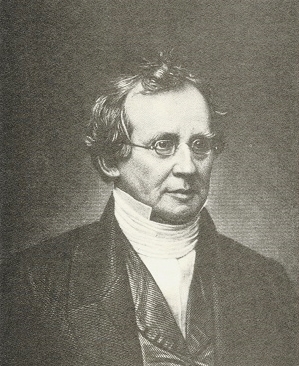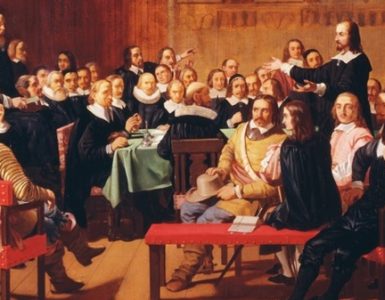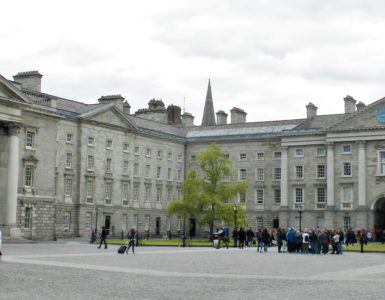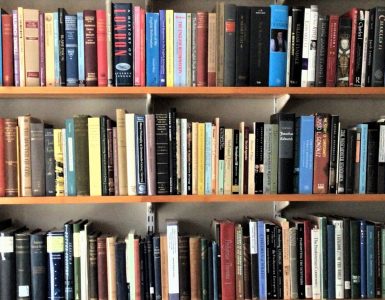Andrew Hoffecker, Charles Hodge: The Pride of Princeton, American Reformed Biographies, Phillipsburg: P&R, 2011, 460 pages including index, select bibliography, and notes. Paperback. Notes are listed at the end of the review.
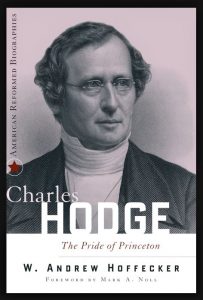 In the Princeton Cemetery of the Nassau Presbyterian Church the remains of Charles Hodge are interred beneath the memorial inscription—“Sacred / to the Memory of the / Rev. Charles Hodge D.D. LL.D / Second Professor / of Systematic Theology / in the Theological Seminary of / Princeton, N. J. / Born in Philadelphia Dec. 28, 1797 / Died in Princeton June 19, 1878 / To be absent from the body is to be / present with the Lord.” Remembrances on grave memorials are often limited in length due to the small surface area of the stones, but Charles Hodge’s inscription is brief given the large area of the stone surface marking his grave and the length of his service to Princeton Seminary. From a wee covenant lad to a weak octogenarian, Professor Hodge was looking to be absent from the body to be present with his Lord. Archibald Alexander Hodge’s account of his father’s life portrays a man who was complex, of varied interests, a patient and loving father, a devoted husband, encumbered by physical affliction, a penetrating scholar, and a faithful servant of Christ. During the more than one hundred thirty years that have passed since A. A. Hodge’s book was published, church historians and other interested persons have awaited something new about Hodge’s life, something historically detached by an author with a critical but fair eye, a book based in scholarship but written for a more general audience; the book has arrived and it is Andrew Hoffecker’s Charles Hodge: The Pride of Princeton.[1]
In the Princeton Cemetery of the Nassau Presbyterian Church the remains of Charles Hodge are interred beneath the memorial inscription—“Sacred / to the Memory of the / Rev. Charles Hodge D.D. LL.D / Second Professor / of Systematic Theology / in the Theological Seminary of / Princeton, N. J. / Born in Philadelphia Dec. 28, 1797 / Died in Princeton June 19, 1878 / To be absent from the body is to be / present with the Lord.” Remembrances on grave memorials are often limited in length due to the small surface area of the stones, but Charles Hodge’s inscription is brief given the large area of the stone surface marking his grave and the length of his service to Princeton Seminary. From a wee covenant lad to a weak octogenarian, Professor Hodge was looking to be absent from the body to be present with his Lord. Archibald Alexander Hodge’s account of his father’s life portrays a man who was complex, of varied interests, a patient and loving father, a devoted husband, encumbered by physical affliction, a penetrating scholar, and a faithful servant of Christ. During the more than one hundred thirty years that have passed since A. A. Hodge’s book was published, church historians and other interested persons have awaited something new about Hodge’s life, something historically detached by an author with a critical but fair eye, a book based in scholarship but written for a more general audience; the book has arrived and it is Andrew Hoffecker’s Charles Hodge: The Pride of Princeton.[1]
Dr. Hoffecker, who is Emeritus Professor of Church History at Reformed Theological Seminary in Jackson, Mississippi, has organized the biography under six divisions corresponding to the eras of Hodge’s life. Each division varies in length with a range of chapters totaling from three to eight. Full end notes, a select bibliography, and a subject and name index facilitate access to the vast resources used by the author. The organization, flow, and presentation of the book are pleasing. It is a subjective comment, but the author’s style came across to me as relaxed, casual, and congenial; I felt as though I was in Dr. Hoffecker’s study and we were sipping coffee and nibbling cookies as he told me the story of the life and work of Charles Hodge. Though many might view Hodge as a “stern Calvinist,” “esoteric systematician,” or one who thumped people on the head with the Westminster Confession, the picture the author gives of “The Pride of Princeton” is one of a humble, gifted scholar who loved his family, his church, his students, his seminary colleagues, and his Redeemer. The author’s presentation of Dr. Hodge’s biography confirms that a life based on sound confessional doctrine yields humble and grateful obedience through the application of the Word to all of life.
Princeton Seminary was intended to solve some problems for Presbyterian divinity education chief of which was the inconsistent quality, doctrine, and content of the instruction provided by well-meaning tutors of divinity candidates. One man might be tutored by a well-read, doctrine oriented, and rhetorically excellent pastor, who was aloof in his manner, but another student was instructed by a dear, patient, and friendly old man whose flock thrived under his care, but his own education was obtained catch-as-catch-can and his instruction to his pupil was not the best. In both of these very different examples there are deficiencies that could be, it was thought, ameliorated by having all divinity students trained in theological seminaries by not only academically but pastorally qualified faculty.[2] The solution to the problem was found in establishing a residential seminary with a full-time dedicated, experienced, and competent group of professors. After considerable debate in the General Assembly, mostly with regard to where the seminary would be located, the site chosen for the new institution was Princeton, New Jersey. Archibald Alexander, then Samuel Miller, and then Charles Hodge were selected to provide the consistency of theological education needed for candidates.
The influence of Archibald Alexander on Charles Hodge is common knowledge, but as Dr. Hoffecker notes, the influence of Samuel Miller has not been so thoroughly investigated.[3] An example of the similar interests of Samuel Miller and Charles Hodge may be seen in comments they both made regarding the education of ministerial candidates. Hodge was presenting his analysis of the General Assembly of 1844 in the Princeton Review when he discussed the funding of theological education and the need for a greater number of qualified candidates for the ministry.[4] He concluded the paragraph commenting that,
All experience teaches us that ignorance, next to sin, is the most fruitful source of error, and that a few able, well-furnished and faithful ministers, are far more efficient for good, than a multitude of uneducated though zealous men (p. 235).
There is nothing unusual about a Presbyterian seminary professor making the case for educated clergy because thoroughly educating candidates for ministry was and continues to be an up-hill battle as many did and do press for reducing educational requirements and/or making the curriculum more “practical.” The founding of the Cumberland Presbyterian Church (CPC) in 1810 in the wake of revival frenzy was at least partially motivated by the desire to reduce educational requirements for ministers. The CPC events were well within the historical view of Miller and Hodge. The quotation from Hodge echoes that of Samuel Miller in 1829 in his address on The Importance of Mature Preparatory Study for the Ministry as he compared surgeons of souls to surgeons of the body saying,
Suppose a population of ten thousand families to be laboring under a contagious and mortal disease. Would it be better to send among them half a dozen wise and skillful Physicians, or fifty or even a hundred miserable quacks, who would be likely to kill more than they would cure? Surely no thinking man can hesitate a moment about the proper answer. The truth is, there are unqualified men enough in the ministry.[5]
Hodge’s comment is not a direct quote of Miller, but the two comments are similar. Both Miller and Hodge were also concerned that ministerial education provide the pastor with not only specifically biblical and theological knowledge but also general knowledge as well. Dr. Hoffecker notes that Hodge’s own diverse interests beyond theology were cultivated by Miller’s thought—“Hodge learned from Miller that a minister of the gospel ought to avoid provinciality by cultivating awareness across the spectrum of cultural developments—history, philosophy, the sciences, literature, and the arts,” which the author attributes to Hodge’s study of Miller’s Retrospect of the Eighteenth Century, 1803.[6] As the author suggests, an intellectual biography of Samuel Miller would be well worth the effort and a bonus would be further connections between Miller and Hodge.[7] Potential biographers should be aware that the Samuel Miller Collection at Princeton Seminary is contained in 28 boxes or nearly twelve linear feet of containers, but they could be relieved that the material is significantly less than the Hodge collection that occupies 47 boxes or nearly eighteen linear feet.
The Charles Hodge volume is the fifth in the series American Reformed Biographies published by P&R. It continues the high level of scholarship that has characterized the series, but there is one aspect of the Hodge volume that is different from the previous four entries—it is a paperback instead of a cloth book with a dust jacket. It may seem picky or unnecessary for a review to discuss paperback vs. cloth, but since the only negative comment I have heard regarding the book is four or five iterations of “it should be a hardback” or “why is it a paperback,” maybe future books in the series will return to cloth bindings.
The traditional publishing industry is having a difficult time due to the continued annual decline in hard-copy book sales (do a web-search of “book sales” for a vivid picture of the situation via graphs, etc.). The transition from the classic printed page invented by Guttenberg to the digital e-book electron coated screen is meeting with problems similar to those faced in the fifteenth century as busy monks transcribing classical and theological volumes were faced with the competition of movable type. Keep in mind here that manual, tedious transcription is the way texts were copied for centuries; it is scribal transcription that preserved and provided the Word of God that we have today.
Those old enough to remember and corrupted by too many hours of television might have a faint recollection of the commercial produced by a manufacturer of photocopiers four or five decades ago. A corpulent monk with his simple brown habit drawn about his waist by a rope and crowned with his crude bowl shaped coiffure is seated at his scribal desk meticulously copying the manuscript before him. As he concluded his project and laid aside his quill, he learns there is a photocopier in the monastery, wonder of wonders, it is a miracle; many copies can be made in minutes with the simple press of a button! However, what the commercial does not mention is that the flip side of the wondrous miracle-machine is unemployment for the portly little saint. One can imagine the situation. What is a monk to do if his pious dip-and-write skill is no longer needed? Why of course, due to the wisdom of the abbot’s program of industrial diversification there are the bakery and brewery; the bread and beer output must be increased so the out-of-work scribes can contribute to the needs of the order despite the Gutenbergian innovation eliminating the scriptorium. The commercial and comments provide a humorous look at a difficult issue in that the transition from one technology to the next very often makes causalities of those who earn a living via the former technology. Bibliophiles should sympathize with publishers who have to maintain their business, earn and provide livings, maintain competitiveness, and make decisions regarding the best format for a financially profitable book. Undoubtedly, the decision to publish the Hodge book as a paperback was a result of considerable deliberation by P&R as they weighed the market situation in the uncertain book world.
In conclusion, Andrew Hoffecker’s book on Charles Hodge is essential for understanding “The Pride of Princeton,” the history and influence of Princeton Seminary, American Presbyterianism, and the historical theology and ecclesiology of Victorian American Christianity. Those interested in reading this biography may want to first read A. A. Hodge’s The Life of Charles Hodge, 1880 (also in reprints), because it provides the personal picture painted by Hodge’s son, which could then be tempered by the excellent historical and nonconsanguinous book by Dr. Hoffecker.
Barry Waugh
[1] Those celebrating the bicentennial of Princeton Seminary and American Presbyterian seminary education may also be interested in reading Paul C. Gutjahr’s fine work, Charles Hodge: Guardian of American Orthodoxy, Oxford, 2011, whose extensively researched biography is enhanced by illustrations and includes a helpful biographical section that gives brief entries regarding the lives of people in the Princeton community associated with Hodge.
[2] The seminary was to have a faculty of three whose responsibilities included “instruction in Divinity, Oriental and Biblical Literature, and in Ecclesiastical History, and on Church Government, and on such other subjects as may be deemed necessary.” See the Minutes of the General Assembly of the Presbyterian Church in the United States of America from its Organization A.D. 1789 to A.D. 1820 Inclusive (Philadelphia: Presbyterian Board of Publication, [n.d.]), p. 454. The first professor at Princeton was Archibald Alexander (1812), the second was Samuel Miller (1813), and the third was Charles Hodge (1820). For the early faculty list, see Princeton Theological Seminary General Catalogue (Trenton: [n.p.], 1881) p. 12.
[3] Page 368, note 6; the book index has 31 passages listed for Alexander and 15 for Miller.
[4] “The General Assembly of 1844,” Princeton Review 16, 3 (1844): 445-448.
[5] The Importance of Mature Preparatory Study for the Ministry: An Introductory Lecture, Delivered at the Opening of the Summer Session of the Theological Seminary at Princeton, New Jersey, July 3, 1829 (Princeton: Printed by Bernard Connolly for the Students of the Theological Seminary, 1829) p. 29, which is available in the online collection of Princeton Theological Seminary, http://scdc.library.ptsem.edu/mets/.
[6] Page 82; Hoffecker said this regarding Miller on p. 368 n. 6 and p. 376 n. 6, and he cites the work of Anita Schorsch, “Samuel Miller, Renaissance Man: His Legacy of ‘True Taste,” Journal of Presbyterian History 66, 2 (Summer 1988): 71-87.
[7] See p. 376 n. 6; both Charles Hodge and Samuel Miller have been known to succeeding generations through the biographies written by their sons.


